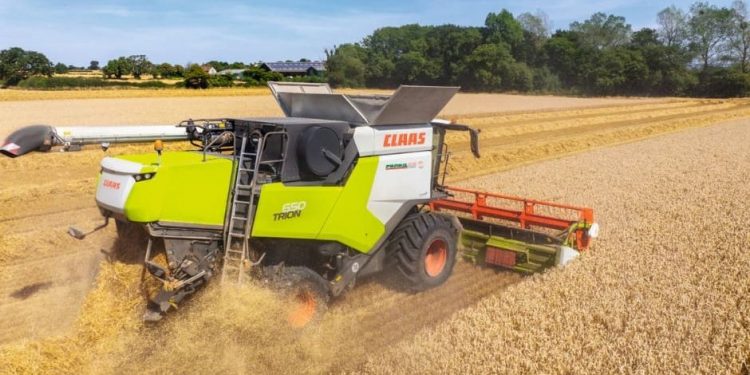Favorable Weather Boosts Balkan States’ Production Amidst Russian Crop Challenges
Winter cereals are being harvested in Bulgaria, and the season’s southern European winter crop harvest is ramping up, with Bulgaria and Romania expecting increased production in 2024. This contrasts sharply with Russia, where the crop has suffered due to extremely hot and dry spring weather.
Gentle Spring in Bulgaria
Bulgaria has experienced beneficial growing conditions this season. Despite some local soil dryness, the crop was planted on time across most regions. Following a relatively mild winter, the second half of April and May saw persistent rainfall and cooler-than-average spring conditions, supporting crop development. Soil-moisture reserves have been optimal during flowering and grain-fill periods, with satellite imagery indicating above-average biomass accumulation across most of the country. The vegetation index (NDVI) shows better crop development than last year, and yield expectations remain optimistic.
The wheat-planted area fell slightly from 1.2 to 1.15 million hectares (Mha) due to dry and warm autumn weather. This year’s wheat crop is expected to be 6.9 million tonnes (Mt), yielding 6 tonnes per hectare (t/ha), which is 9.5% above the European Commission’s May forecast of 6.3Mt. New-crop barley production in Bulgaria is expected to increase by 11.7% to 850,000t, with an average yield of 5.2t/ha.
Corn, Bulgaria’s main summer crop, had a strong start with early planting under favorable conditions. However, heavy rainfall in early and mid-May hampered the latter part of the planting campaign. The current production estimate is 2.8Mt off an estimated planted area of 520,000ha, subject to revision based on July and August weather conditions.
Mixed Start in Romania
In Romania, planting was delayed due to unseasonal dryness in some regions and excessive rains in others. While the west received abundant rainfall, the south and southeast had limited rainfall. Some late planting occurred in December. Romanian farmers are favoring more winter crops such as wheat and barley, with a notable decrease in rapeseed planting due to dry soil conditions.
Soil-moisture maps show mild deficits in eastern areas but more favorable reserves in the west, central, and southern areas. Above-average temperatures combined with beneficial April and May precipitation accelerated crop maturity. Romania is expected to achieve record wheat production of 10.5Mt in 2024-25, surpassing the previous record of 10.3Mt set in the 2021-22 season. This year’s higher production outlook results from a slight increase in area to 2.27Mha and an increased yield from 4.46t/ha to 4.6t/ha.
Barley production in Romania is projected at 2.2Mt, slightly down from a record 2.3Mt in 2023-24, with a higher planted area but slightly lower yield. The rapeseed crop is expected to be 1.6Mt, down 9.3% year on year, with a 13.4% reduction in seeded area.
Corn remains Romania’s primary summer crop. The European Commission predicts an increase in annual production of 13.3% to 12.3Mt, with a planted area up 7.9% to 2.5Mha and a projected yield increase of 5% to 4.91t/ha.
Balkans Sales to Egypt Fill Void
With new-crop wheat production in Russia and Ukraine down around 20Mt collectively from 2023-24, global consumers relying on Black Sea and European exports will turn to countries like Bulgaria and Romania. Their participation was evident in the latest Egyptian tender, where the two Balkan states supplied 70% of the 400,000t purchased.
Error




